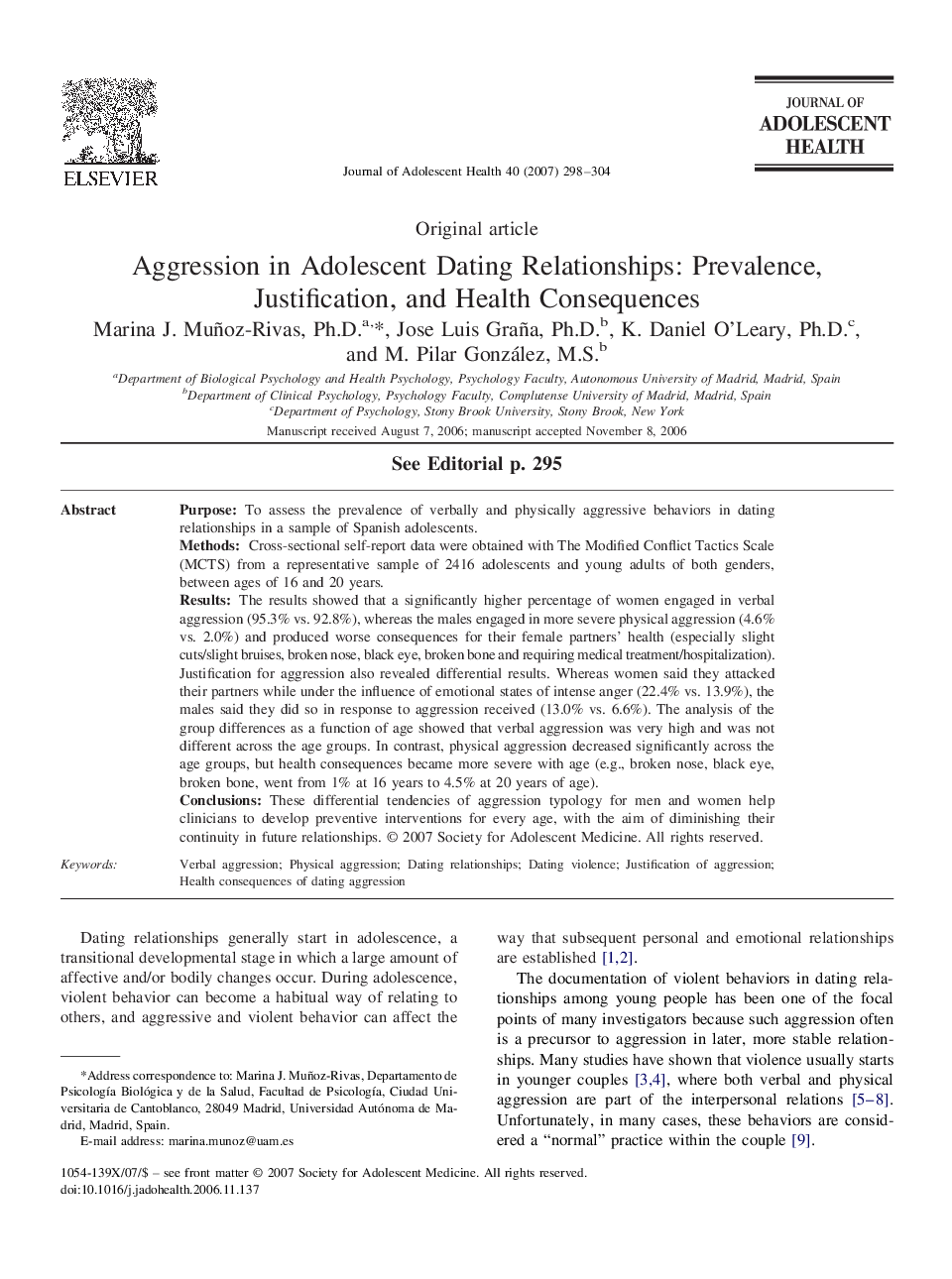| Article ID | Journal | Published Year | Pages | File Type |
|---|---|---|---|---|
| 1080844 | Journal of Adolescent Health | 2007 | 7 Pages |
PurposeTo assess the prevalence of verbally and physically aggressive behaviors in dating relationships in a sample of Spanish adolescents.MethodsCross-sectional self-report data were obtained with The Modified Conflict Tactics Scale (MCTS) from a representative sample of 2416 adolescents and young adults of both genders, between ages of 16 and 20 years.ResultsThe results showed that a significantly higher percentage of women engaged in verbal aggression (95.3% vs. 92.8%), whereas the males engaged in more severe physical aggression (4.6% vs. 2.0%) and produced worse consequences for their female partners’ health (especially slight cuts/slight bruises, broken nose, black eye, broken bone and requiring medical treatment/hospitalization). Justification for aggression also revealed differential results. Whereas women said they attacked their partners while under the influence of emotional states of intense anger (22.4% vs. 13.9%), the males said they did so in response to aggression received (13.0% vs. 6.6%). The analysis of the group differences as a function of age showed that verbal aggression was very high and was not different across the age groups. In contrast, physical aggression decreased significantly across the age groups, but health consequences became more severe with age (e.g., broken nose, black eye, broken bone, went from 1% at 16 years to 4.5% at 20 years of age).ConclusionsThese differential tendencies of aggression typology for men and women help clinicians to develop preventive interventions for every age, with the aim of diminishing their continuity in future relationships.
